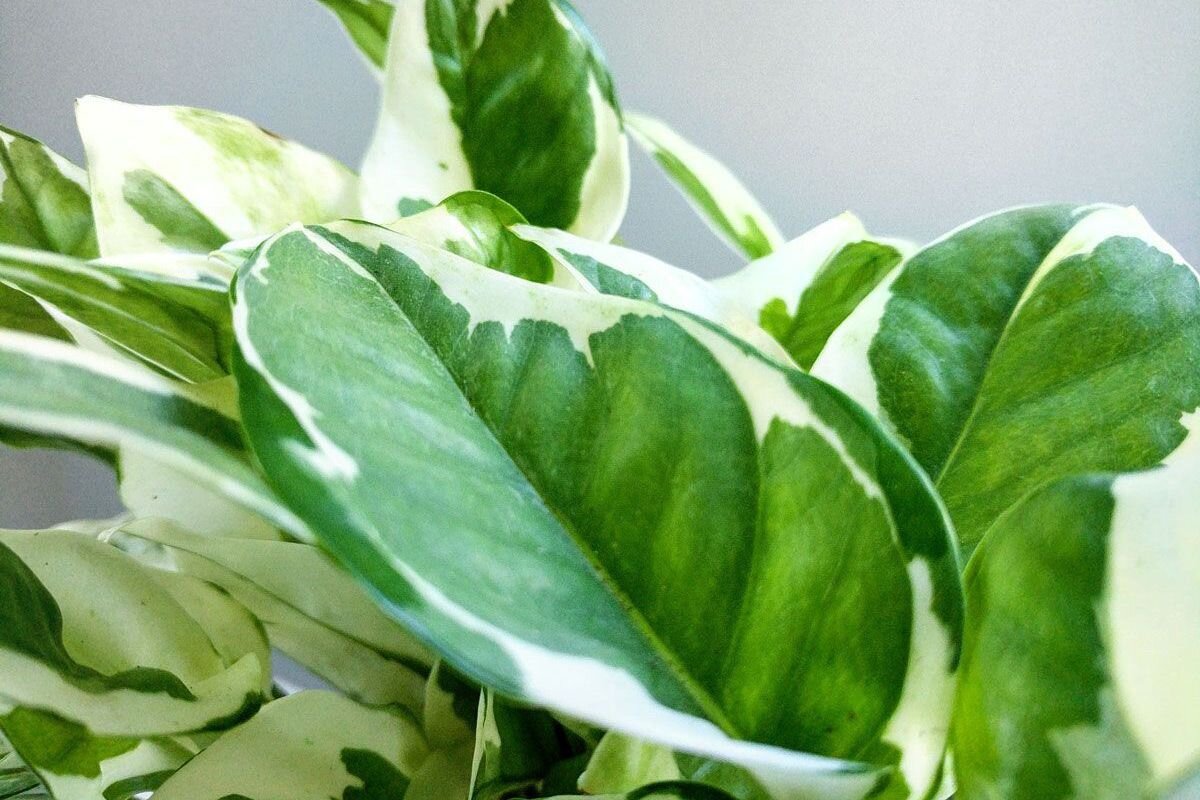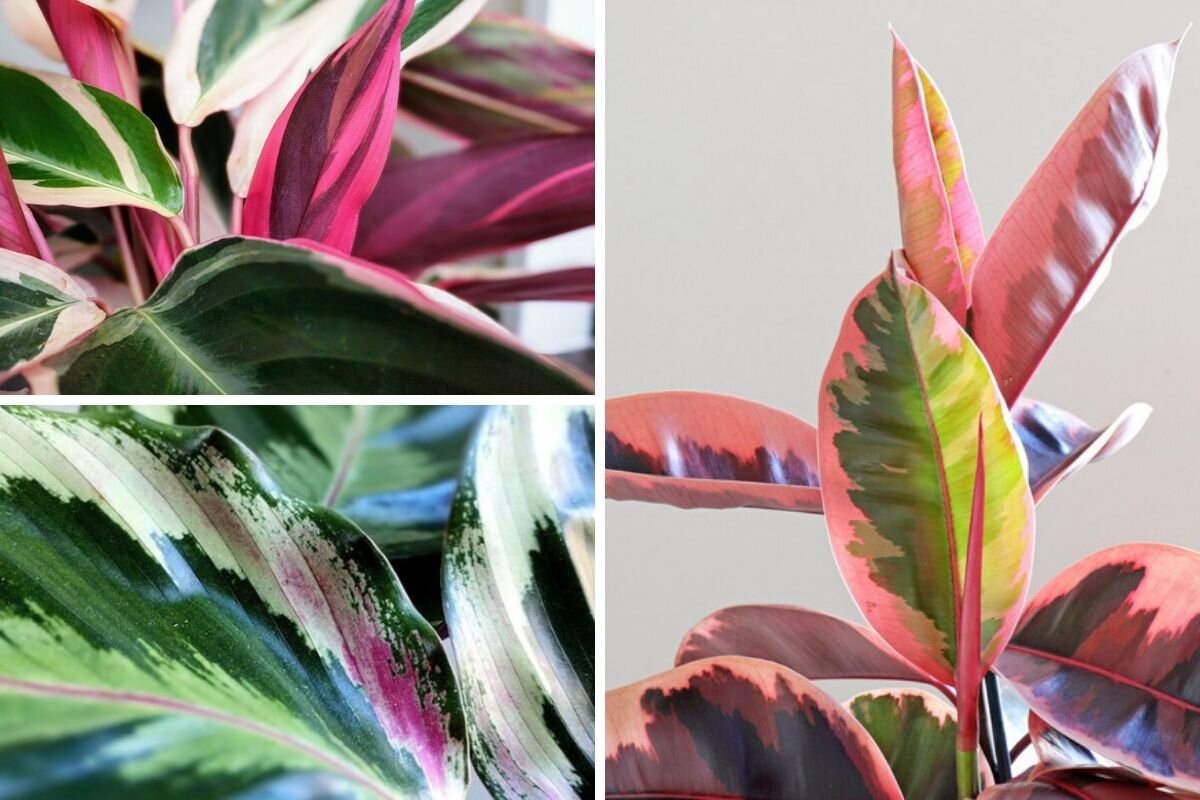Variegated Plants: Nature's Painted Beauties
The gorgeous variegated leaves of the N’Joy Pothos.
When it comes to colorful plants, we’ve all fallen in love at one point or another, whether it be with a Pink Rubber Tree, an N’Joy Pothos, or the rare and elusive Variegated Monstera that seemingly only grows on Instagram. Variegated is indeed on trend, and these unique bicolored and tricolored beauties have become some of the most sought-after indoor plants in recent years. But what is variegation, where does it come from, and what do we need to know about variegated plants before bringing them into our home?
What is variegation?
The word variegation refers to flowers or leaves with more than one color. Though it is a term that is used rather loosely in the plant world, a variegated plant is one whose flowers or leaves usually have two or three colors, but can sometimes have more.
Variegated leaves come in many forms and may be the cause of natural occurrences or genetic alterations. Depending on the type of variegation, some plants may be more delicate than others, but all are incredibly beautiful and unique!
Pretty in pink! Seemingly painted on, these pink variegated leaves add a gorgeous splash of color their surroundings. Pictured clockwise from left to right: Magenta Triostar, Pink Rubber Tree, and Calathea Medallion.
Different types of variegated leaves
From “painted” leaves to patches of albino white or shimmering silver, there are many different types of variegated foliage. But what causes variegation, and how do the various types differ? Below are three of the most common types of variegation in popular houseplants:
Natural variegation - Sometimes also referred to as pigmented variegation, these plants are naturally patterned. The pattern of their leaves is written into their DNA, and every single leaf will grow with this pattern. Though this happens naturally, horticulturists often create cultivars, or hybrid species, to accentuate the natural patterning. Some popular indoor plants and cultivars with natural variegation include the Magenta Triostar, Silver Evergreen, Snake Plant, and Pink Rubber Tree.
Chimeral variegation - This type of variegation is caused by genetic mutation where some tissue of the plant is able to produce chlorophyll and other tissue is not. The result is a plant with white areas randomly mixed with green areas on leaves, like the incredibly popular yet hard to find Variegated Monstera.
Reflective variegation - Also known as blistered variegation, reflective variegation naturally occurs when tiny air pockets (blisters) are formed between the different layers or tissues of the plant. When light hits these areas, it is reflected, creating a type of silver shine like on the Satin Pothos.
Top plants with variegated leaves
Magenta Triostar
A member of the prayer plant family, the bright pink and green Magenta Triostar opens and closes its leaves throughout the day.
Golden Petra
With bright orange, yellow, and red veins, the Golden Petra is a uniquely vibrant plant that thrives with plenty of bright light.
Calathea Medallion
One of our top-selling gifts, the Calathea Medallion has patterned leaves of burgundy, fuchsia, and shades of green.
Silver Evergreen
Sage green leaves with silver undertones, this low-light dweller is one of our most popular variegated plants.
Calathea Rattlesnake
With jagged purple and green leaves, it’s no surprise where this plant got its name, resembling the patterns on the skin of a rattlesnake.
How to care for variegated plants
Like all plants, each variety will require its own care regimen. That said, variegated plants tend to be on the more delicate side than their non-variegated counterparts, and generally require bright indirect light for their multi-colored leaves to thrive. Plants that are variegated as a result of genetic mutation are particularly sensitive, as they photosynthesize less due to the lack of chlorophyll on the white areas on their leaves.
In some cases, a branch or stem on a variegated plant may start to lose the white areas on the leaves, slowly turning all green. This is known as “reverting”, and is a sign that the plant is simply returning to its natural state. To avoid your plant fully reverting to green, prune stems whose leaves are turning green as soon as they appear.
Where to buy variegated plants
Certain variegated plants can be extremely hard to come by. Etsy is a great place for rare variegated plants, though generally will require some green thumb expertise as they often ship simple cuttings. If you’re in search of the Variegated Monstera, stay in touch by signing up for our newsletter or following us on Instagram — we are always trying to get our hands on them and occasionally hold giveaways when we do!
What are your favorite variegated plants? Let us know in the comments!
Indoor plants, potted & delivered
Premium plants paired with stylish ceramics, plus lifetime plant care support. Order online at leonandgeorge.com







